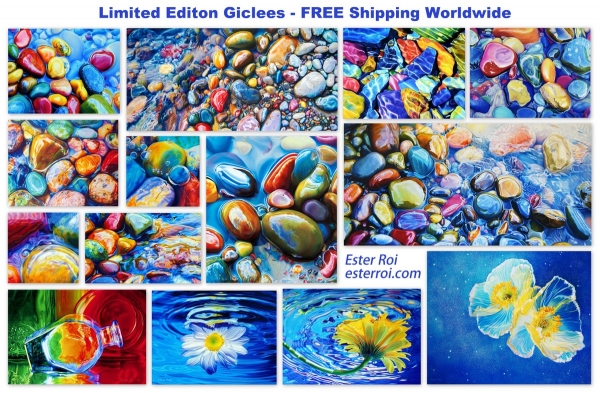
Offer valid until December 31. Click here for more information.
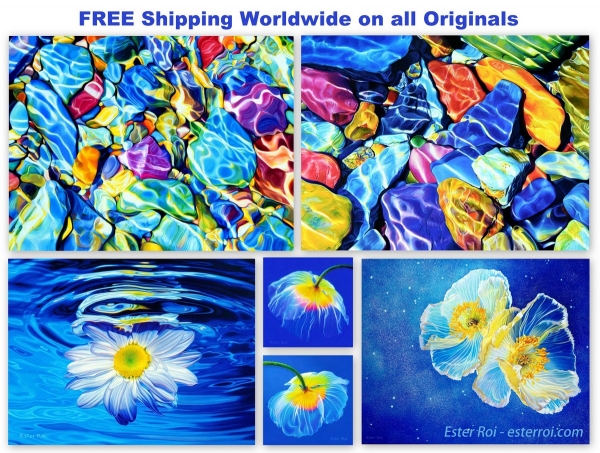
Offer valid until December, 31. Click here for more information.

Subscribe to my newsletter to receive 4 to 5 emails per year where I highlight important news, available originals, and seasonal specials.
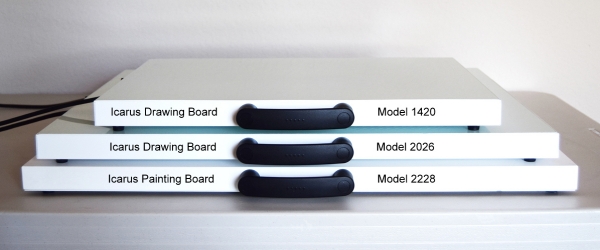
Small Icarus Board, Mod.1420, $25.00 discount - Code: 2016SB
Large Icarus Board, Mod.2026, $30.00 discount - Code: 2016LB
Icarus Painting Board, Mod.2228, $35.00 discount - Code: 2016PB
Valid until December 31, 2016

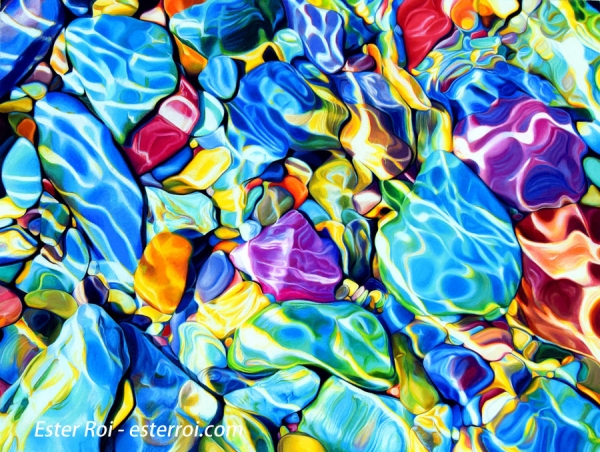
My latest artwork, titled "McDonald Creek, No. 3", was inspired by the ripples reflected on the colorful pebbles of the McDonald Creek, Glacier National Park, Montana. This piece has a very abstract slant due to its close-up take and the refraction caused by the running water.
Size: 12" x 16"
Medium: Luminance and Prismacolor colored pencils, and Golden Matte Acrylics
Surface: Art Spectrum Colourfix Supertooth board
Technique: Icarus Painting Board
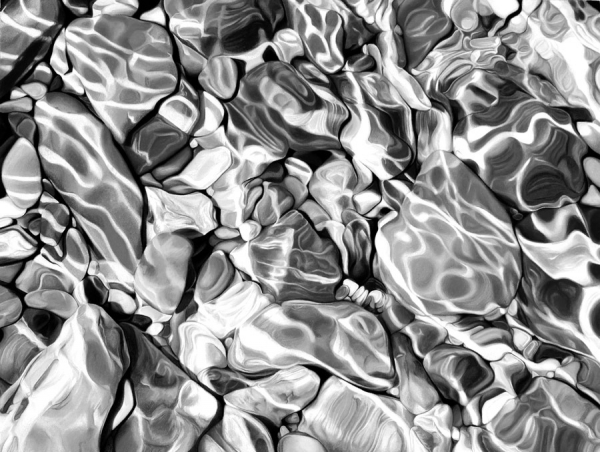
Even with abstract work, value and composition are still of the outmost importance. A value range from 0 to 10 brings form and depth to life. Colors, of course, always evoke a strong emotional response but if the values are incorrect, the colors will not work.
I normally block in the main colors with artist crayons and wax pastels (Neocolors). This time I wanted to experiment with acrylics. Since colored pencils adhere only mechanically to acrylics, it's crucial to use a surface with a strong tooth, especially when framing without glass. After acrylics dry, the tooth is then still available for colored pencils.
Regular acrylics are usually glossy and that finish interferes with colored pencil adhesion. However, Golden Matte Acrylics, Fluid or Heavy Body, are less sleek than gloss acrylics and provide a better surface for colored pencils.
So, what are the advantages of using acrylics with colored pencils? I discovered two helpful applications.
USING ACRYLICS TO BLOCK IN COLORS
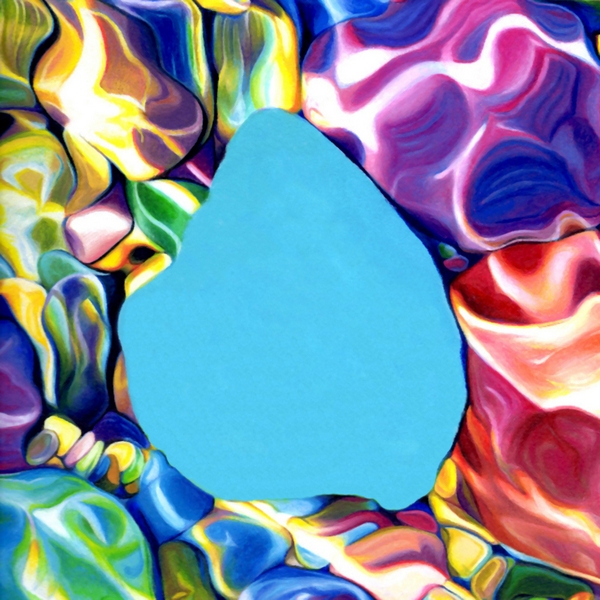
Acrylics are perfect for covering large areas of flat color; they can be brushed on quickly and they dry in a jiffy. I chose to paint this pebble with a middle value. With a few brush strokes, using paint thinned with water, I completely obliterated the white of the paper.
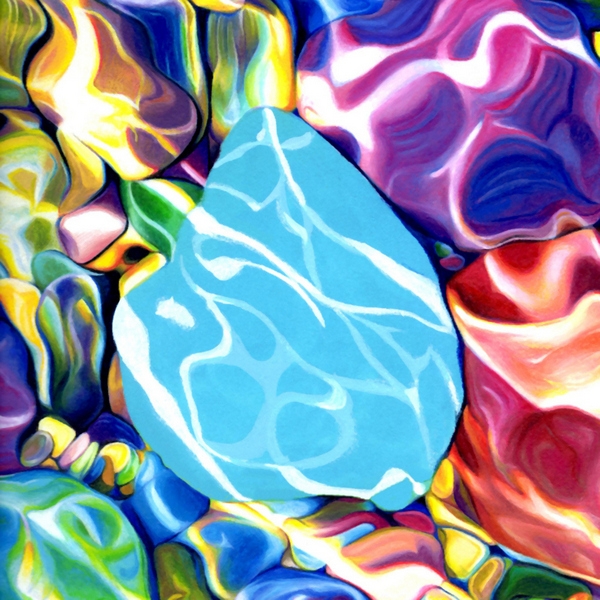
I then created the ripples with white paint and a lighter value of the local color. I don't worry about being precise at this point; that's where colored pencils will come in handy.
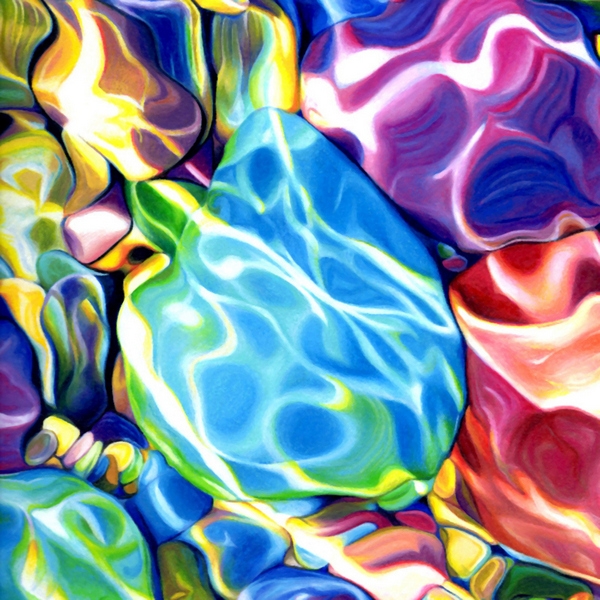
After turning on the heat of my Icarus Painting Board (medium setting), I began developing colors, values and details with colored pencils in my usual fashion, blending with a paper stump when necessary. The acrylic under-layer is left uncovered in some areas to allow for optical blending.
USING ACRYLICS TO GLAZE
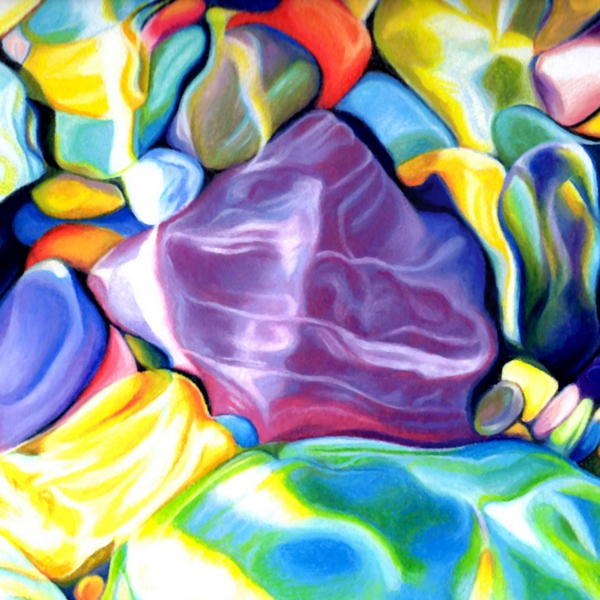
I use only lightfast colored pencils and some of the colors in the pink, purple and violet family are a little dull and not as bright as their fugitive counterparts.
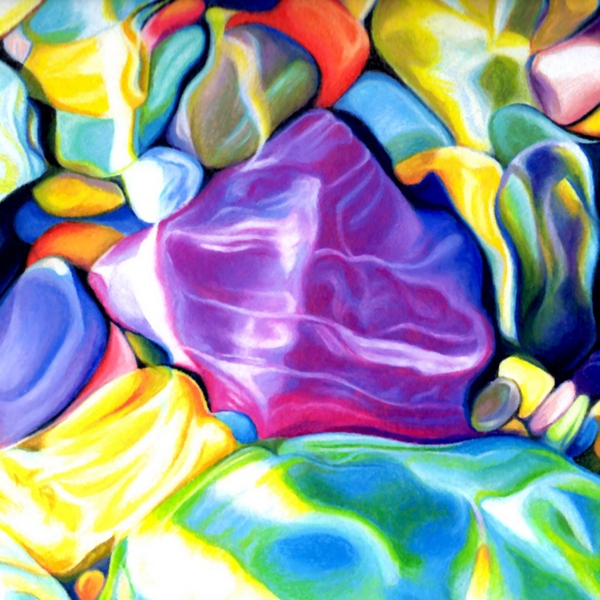
If you're a fan of bright colors like I am, you'll be happy to know that there's a way to remedy that dullness. Acrylics are lightfast and can be glazed over colored pencils. On this pebble I painted a very light mixture of Golden Quinacridone Magenta and Golden Acrylic Glazing Liquid. The glaze worked wonderfully but it took me two tries to get it right.
On the first try, the glaze darkened the overall values. So I reworked the pebble on my Icarus Painting Board; the heat allowed me to easily remove the acrylic glaze using colored pencils alone. After lightening the values, I then re-glazed the pebble (no heat). Acrylics can also be used for touch-ups, especially when highlights have lost their luster; a little Titanium white can do wonders.
Listen to my podcast interview on Sharpened Artist. What a great opportunity to talk about my background in art, my experience as a professional artist and what led me to create the Icarus Board.
Here is what artist Kendra Lamont Nafziger said after listening to the podcast:
"This was one of the most enlightening and enjoyable podcast ever! Ester is an eloquent, gracious human being. I actually teared up toward the end hearing her encouragement for artists! "Don't concern yourself with finding your voice. It was never lost; it just takes time for it". I am so grateful for this podcast. Ester, you are a gem."
Many thanks to John Middick of Sharpened Artist and Lisa Clough of Lachri Fine Art for this enjoyable interview.
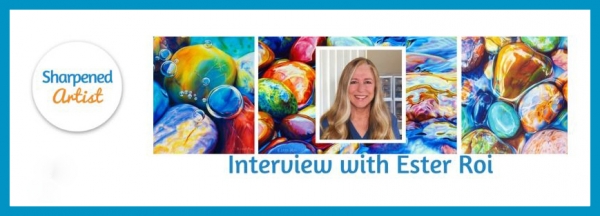
The CPSA silent auction, "Small Works of Great Magnitude," will be held during the upcoming convention in Tacoma, Washington. Bids are accepted starting Tuesday, July 26, and culminate with final bids at the Art Gala on the evening of Thursday, July 28.
Below you can see my donation, "Cambria", created for the new Caran d'Ache Luminance brochure. Click here to preview all the entries: http://cpsa.org/silent-auction-2016
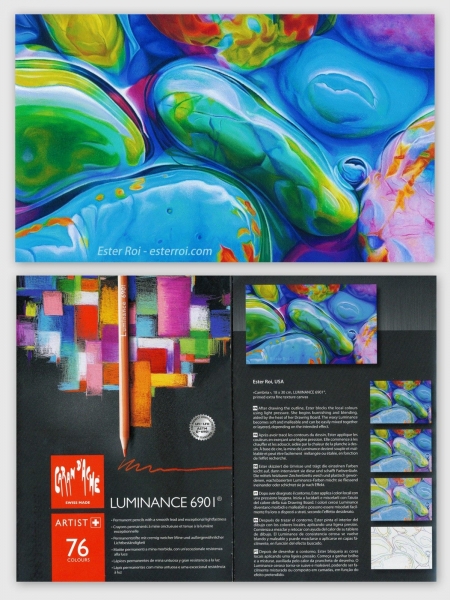
Listen to this inspiring podcast interview with Cecile Baird, where she talks about her dramatic still-lifes, how she takes photo references and how she incorporates the Icarus board in her technique.
http://sharpenedartist.com/podcast/cecile
http://www.cecilebairdart.com/
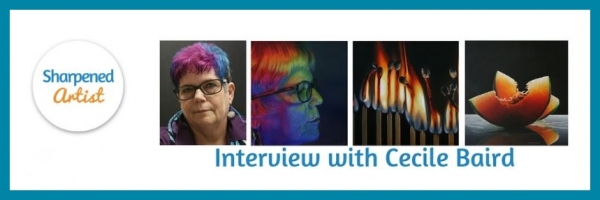
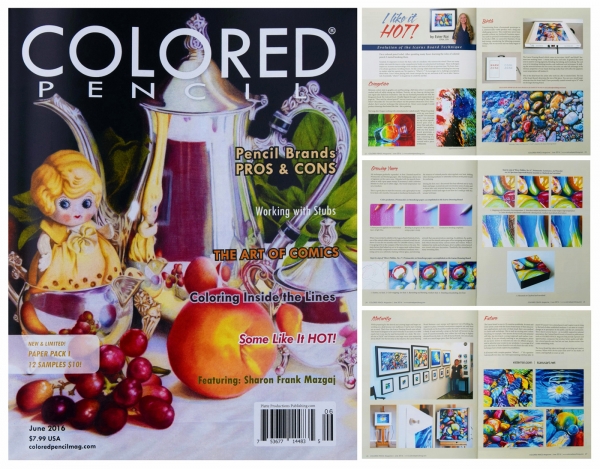
I'm thrilled to have a six page article published in the June issue of COLORED PENCIL Magazine. It's so nice to be back!
Look for an in-depth presentation of my technique with several step-by-steps. Read about my exciting journey with the Icarus board, from conception to the future.
If you are a subscriber of COLORED PENCIL Magazine, don't forget to take advantage of a special saving offer for our three Icarus board models. If you're not a subscriber, you really should be: http://coloredpencilmag.com/subscribe/, it's an amazing publication!
In 2012 I was featured in COLORED PENCIL Magazine's first issue and my artwork "Social Network" was on the cover (see photo below).
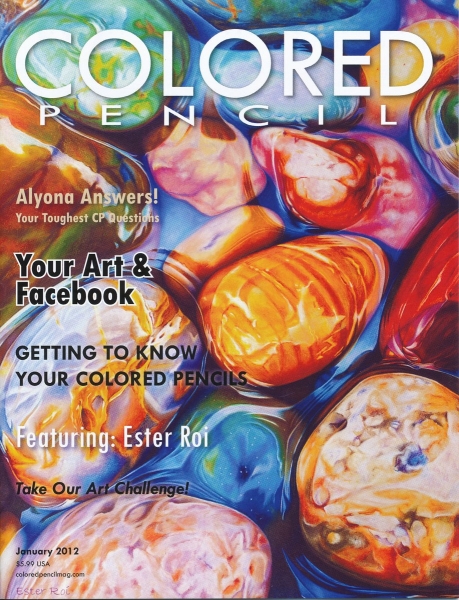
If you use wax-based colored pencils or wax pastels and artist crayons, you're familiar with wax bloom, that cloudy, white film that forms on the artwork. Don't wipe it off with a cloth or you'll risk smearing the pigment.
I have a simple solution; just blow warm air over the surface with a hair dryer or a heat gun. If you're not in a hurry, let the heat of the Icarus board do the job for you. When you're done with your drawing, final fixative or varnish will take care of wax bloom for ever.
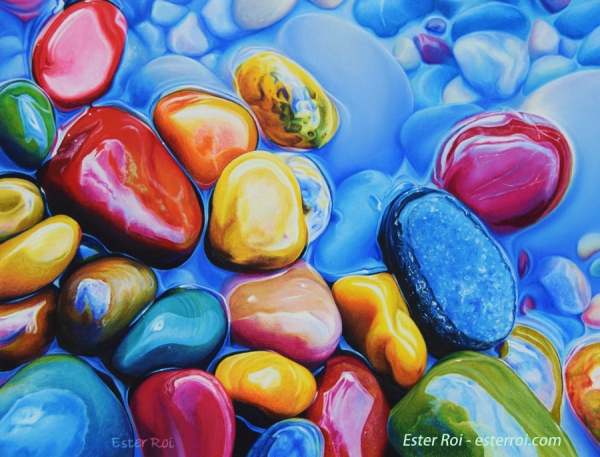
Title: "Awakening"
Size: 11" x 14.5"
Medium: Prismacolor and Luminance colored pencils, Neocolor artist crayons
Tools: tortillions, paper stumps, color shapers
Surface: Art Spectrum Colourfix Supertooth board
Technique: Icarus Painting Board
For pricing information check here.

The Icarus Art Winter 2016 Newsletter was recently sent out. Click on this link to read it. If you'd like to register for the newsletter, go to the homepage of Icarus Art and click the sign-up button on the top right corner.